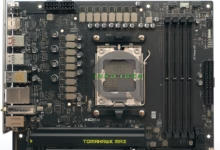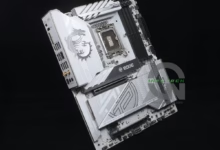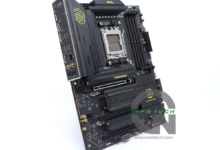The Benefits of Using Self-Service Medical kiosks keep the patient’s experience moving efficiently. They also reduce operational costs by allowing healthcare providers to shift human resources to higher-value tasks.
Kiosks allow patients to complete their check-in process independently, eliminating front desk congestion. Patients can identify themselves, answer questions and verify data, complete forms, and make payments on the spot.
Faster Check-In
When self service medical kiosk are used with an electronic medical records system, it speeds up the entire process. It can take minutes to complete a patient’s check-in, rather than waiting in line for a nurse to help.
It is a huge benefit, particularly during a pandemic. It helps facilities avoid delays that can put patients at risk and ensures the staff can focus on keeping patients safe.
Medical Kiosks are also equipped to scan and process barcodes and payments, which makes it possible to have a much faster registration experience than traditional methods. The software can even support voice input, a feature that could prove helpful in an outbreak if patients have difficulty physically touching the hardware or using the keyboard.
The medical kiosks can verify insurance information, collect payments, complete demographic forms, and offer telehealth options. They can reduce wait times, keep nurses and patients protected from infectious diseases, and streamline patient intake, minimizing the number of people that need to be contacted in the emergency department.
More Convenient
It’s hard to blame patients for being dissatisfied with the service they receive from the average ill-equipped receptionist. Frequently, they are met with a frown behind the glass as they’re asked to wait while the employee struggles with piles of paperwork and empty coffee cups.
Medical kiosks offer a better solution to this problem by allowing patients to check in and self-register themselves, with the bonus of reducing waiting times for reception staff. It will enable receptionists to reassign themselves to more value-added tasks like making appointments and scheduling follow-up visits for patients who need them.
However, EDs must be careful to deploy kiosks in ways that will not compromise patient safety or raise liability and compliance risks. For example, if a patient enters symptoms into the cubicle and a greeter does not verify them accurately, this could be considered a medical screening examination, potentially raising EMTALA and malpractice concerns. Similarly, if the kiosk is used to register a sick patient and no one is available to screen them before they’re admitted, this may also raise these issues.
Reduced Errors
Patients are increasingly tech-savvy and want a convenient, integrated healthcare journey. Self-service medical kiosks provide the ideal solution, helping reduce operational costs and diverting staff to higher-value tasks.
Kiosks can also help to reduce errors in data entry and paperwork. It saves the medical team time and effort and helps avoid unnecessary delays in patient care.
Using medical kiosks also allows staff to focus on greeting patients and answering questions rather than processing forms or completing administrative work. It can improve customer service and reduce patient and hospital staff frustration.
Kiosks have challenges but are easy to fix by backing the booth to the facility’s computer system. Also, medical kiosks can ask patients to answer questions in multiple languages, which may not be ideal for non-computer literate patients. It may create confusion and result in inaccurate answers, which could affect EMTALA compliance or malpractice claims.
Convenient Payment Options
Kiosks can also connect to a website portal to process patient payments online and through credit cards. It is crucial for a hospital as it allows patients to make payments quickly without requiring additional staff members to handle cash or checks.
The system can even help with patient follow-up, enabling medical staff to quickly view a patient’s history of appointments and any outstanding medical balances. It is advantageous in a time of pandemics where healthcare facilities are short-staffed and overwhelmed by high volumes of people.
Medical kiosks are becoming more commonplace in the healthcare industry, as they provide an excellent return on investment, increasing staff efficiency and reducing costs. Not all patients will be willing to use the technology, requiring a significant upfront investment and maintenance costs. Hospitals should make the kiosks readily available to their patients by putting them in high-traffic areas and posting signage to encourage usage.
Increased Patient Satisfaction
Kiosks eliminate the need for receptionists to fill out forms and help reduce errors that could occur when the information is inputted by hand. The booths also ensure that the correct data, such as consent forms and medical history, are filed in the system.
Patients can complete all of their registration activities on the kiosk, including answering screening questions, verifying data, completing and signing forms, making payments, and printing out confirmations. It allows staff to focus on more high-value tasks, such as greeting and assisting patients.
Using kiosks has improved patient satisfaction by eliminating wait times and reducing frustration. The system is advantageous when the practice is experiencing a surge in demand, such as during the coronavirus pandemic.
Kiosks can also improve patient safety by reducing the need for greeters to question non-computer literate patients. For example, an integrated voice command feature can help support using a kiosk for patients with limited mobility or cognitive challenges. However, the booth should be fully integrated with all systems to ensure essential information is noticed.
Do you have other ideas about the article The Benefits of Using Self-Service Medical Kiosks for Patients, 5 Best Advantages? You can comment below or discuss more related to “The Benefits of Using Self-Service Medical Kiosks for Patients, 5 Best Advantages” in the CnwinTech Forum. Also, read more articles about Insurance Tech, Insurance Business Investment, or other exciting tech tips and tricks at CnwinTech.
Want to have a capable desktop PC at an affordable price for multitasks, playing games, and working? Check out and visit our store below!













